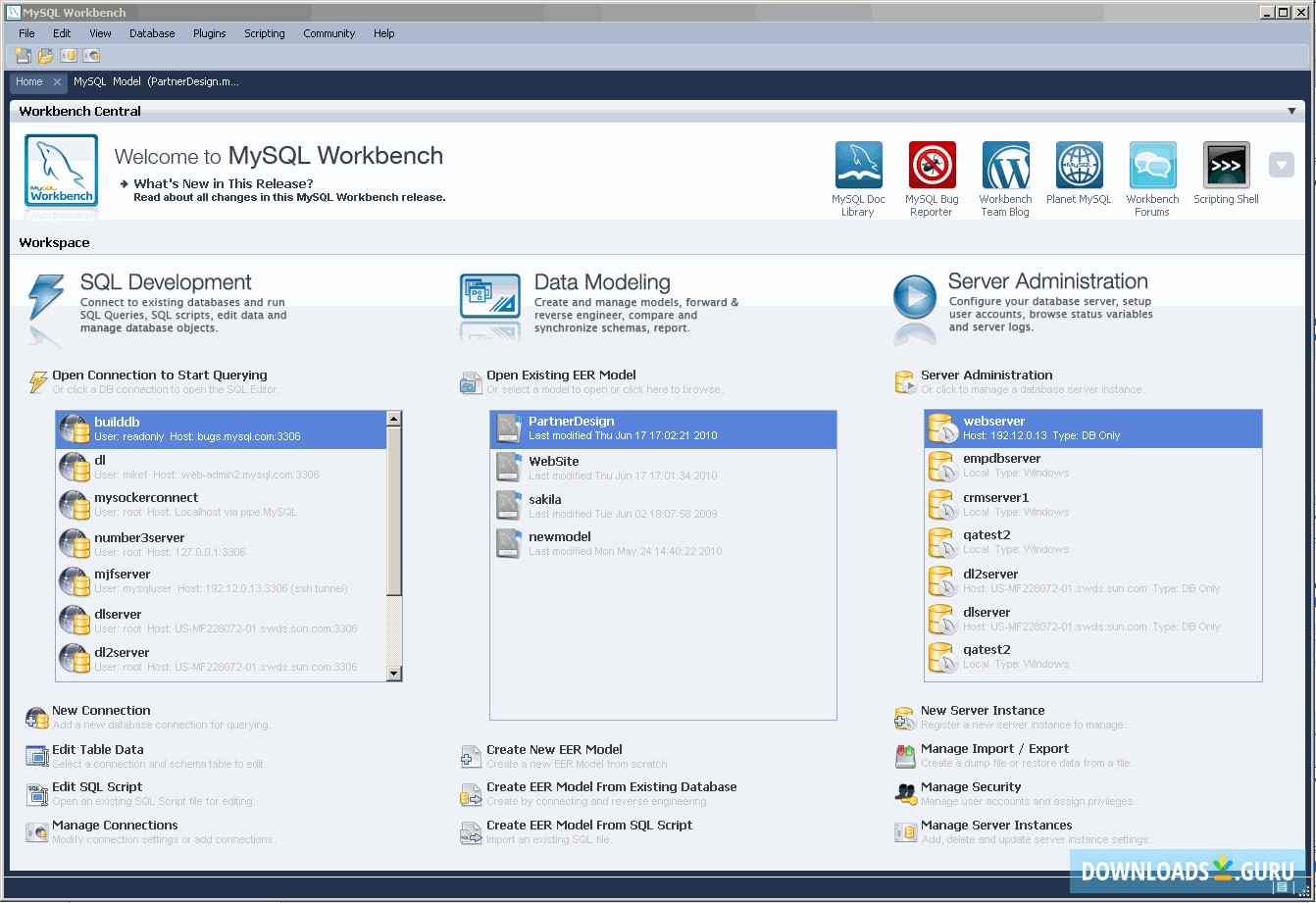
MySQL Workbench provides a visual console to easily administer MySQL environments and gain better visibility into databases. The Object Browser provides instant access to database schema and objects. The Database Connections Panel enables developers to easily manage standard database connections, including MySQL Fabric. The SQL Editor provides color syntax highlighting, auto-complete, reuse of SQL snippets, and execution history of SQL. MySQL Workbench delivers visual tools for creating, executing, and optimizing SQL queries. It includes everything a data modeler needs for creating complex ER models, forward and reverse engineering, and also delivers key features for performing difficult change management and documentation tasks that normally require much time and effort. I hope you liked this tutorial, dont forget to share it with others.MySQL Workbench enables a DBA, developer, or data architect to visually design, model, generate, and manage databases.
#Mysql workbench for mac m1 how to
We have completed the MySQL tutorial, and In this tutorial, we learned how to install MySQL community server on Mac OS, How to access root user in the MySQL server, Create Database and Table.

CREATE TABLE IF NOT EXISTS `Users ` ( `id ` int ( 11 ) NOT NULL AUTO_INCREMENT, ` name ` varchar ( 256 ) NOT NULL, `email ` varchar ( 50 ), `age ` int ( 11 ) NOT NULL, `mobile ` VARCHAR ( 20 ), `created ` datetime NOT NULL, PRIMARY KEY ( `id ` ) ) ENGINE = InnoDB DEFAULT CHARSET =utf8 AUTO_INCREMENT = 19 mysql > use positrondbĬreate a table in the MySQL database => ‘positrondb’. Use the newly created “positrondb” db by using the below command. | information_schema | | mysql | | performance_schema | | positrondb | | sys | You can verify the newly created MySQL database. Now we will use the mysql query to create a new database. Type ' \c' to clear the current input statement. Other names may be trademarks of their respective Oracle is a registered trademark of Oracle Corporation and/or itsĪffiliates. Server version: 8.0.20 MySQL Community Server - GPLĬopyright (c ) 2000, 2020, Oracle and/or its affiliates. mysql -u root -p Welcome to the MySQL monitor.

#Mysql workbench for mac m1 password
So you have to type the password that you defined when installing the MySQL initially. When you run the following command it will ask for the password. We are all set with the server configurations, now we have to access the MySQL root. Now, we have reached to essential step of our tutorial. To verify the current status of MySQL server: rver status Access Root via Mac Terminal & Create Database Type the below command to restart the MySQL server that is already running: sudo rver restart Run the following command to stop mysql server: sudo rver stop Here are the important commands that are often used while working with MySQL. Rm: /usr/local/mysql/data/: Permission deniedĮRROR ! The server quit without updating PID file (/usr/local/mysql/data/shivas-MBP.pid ). usr/local/mysql/bin/mysqld_safe: line 937: /usr/local/mysql/data/shivas-MBP.err: Permission denied usr/local/mysql/bin/mysqld_safe: line 199: /usr/local/mysql/data/shivas-MBP.err: Permission denied usr/local/mysql/bin/mysqld_safe: line 144: /usr/local/mysql/data/shivas-MBP.err: Permission denied Logging to '/usr/local/mysql/data/shivas-MBP.err'. usr/local/mysql/bin/mysqld_safe: line 674: /usr/local/mysql/data/shivas-MBP.err: Permission denied We used `sudo` with rver start otherwise it will throw permission errors. Here is the output we get when MySQL is started correctly.

Next, type the command to start the MySQL server. Include one per line given below paths in the /etc/paths file. The easiest way to open the file is to type the following command in the terminal and provide the password. To fix this issue, we have to define the MySQL path in the paths file. rver startīut this command will display the following error on your terminal screen. To start the MySQL via terminal app, you need to use the following command. Well this is not the only way to start the server, we can even manually start the MySQL server via command line.

You can even stop the server by clicking on “stop MySQL server”. Here you can see the MySQL is already running and other configurations of MySQL.


 0 kommentar(er)
0 kommentar(er)
